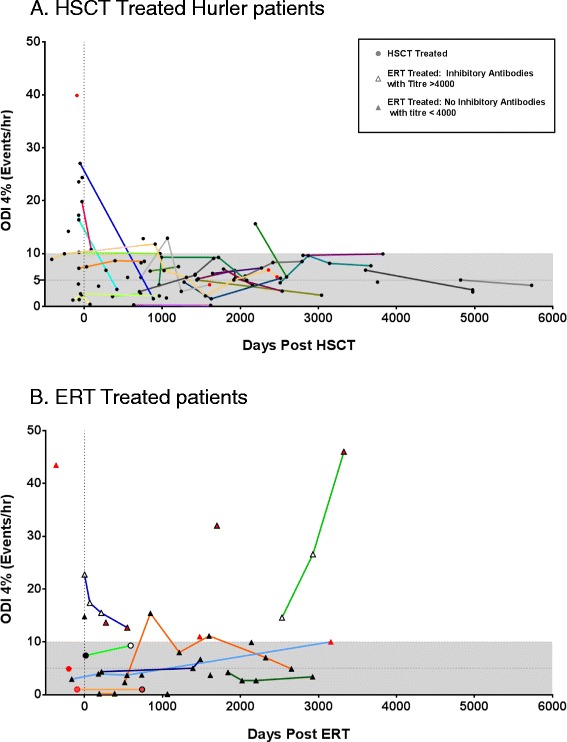Figure 1.

Longitudinal trends in sleep disordered breathing (SDB) following treatment in MPS I patients treated with A. haematopoietic stem cell transplant (HSCT) or B. enzyme replacement therapy (ERT). Oxygen desaturation index 4% (ODI4%) data from sleep studies for each individual patient is plotted against duration since initiation of treatment, with solid lines connecting trends per patient. The shaded area represents an ODI4% of less than 10, representing the cut-off for severe SDB. Red legend identifies patients who require therapeutic intervention to the airway following the identified sleep study. (A). Data for 41 patients is presented. Hurler patients (circles) treated with HSCT show improvement in the severity of SDB compared to pre-treatment. Over the duration of follow up the majority of patients (76%) improve or remain stable. A reducing proportion of patients suffer severe SDB, with only one patient demonstrating severe SDB in the period after 3 years post HSCT. 3 patients require therapeutic intervention post-HSCT. (B). Data in 17 ERT treated attenuated patients (triangles) and 3 Hurler patients (circles) is presented. Amongst attenuated patients with longitudinal data, 73% are seen to progress, but rarely to severe SDB However, a cohort of attenuated patients developing inhibitory antibodies (open triangles) continue to suffer with severe SDB. 7 patients require therapeutic intervention (surgery or CPAP) while on ERT.
